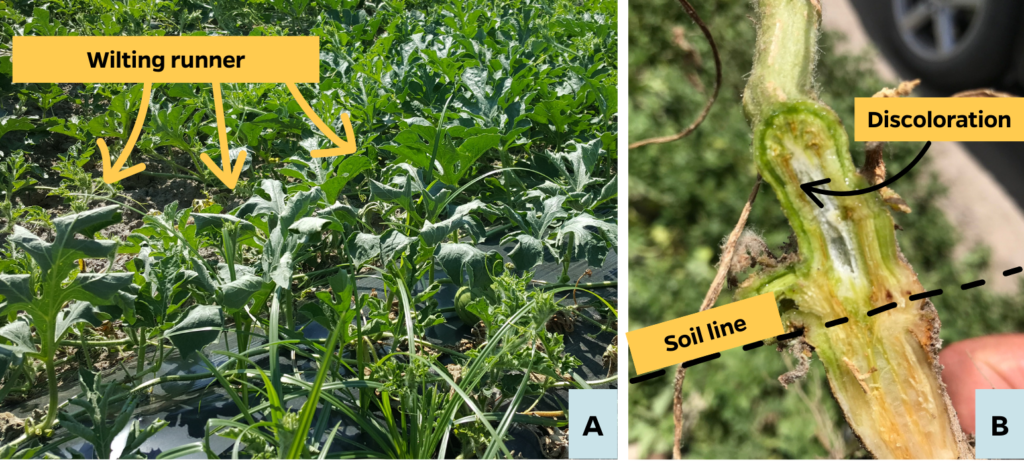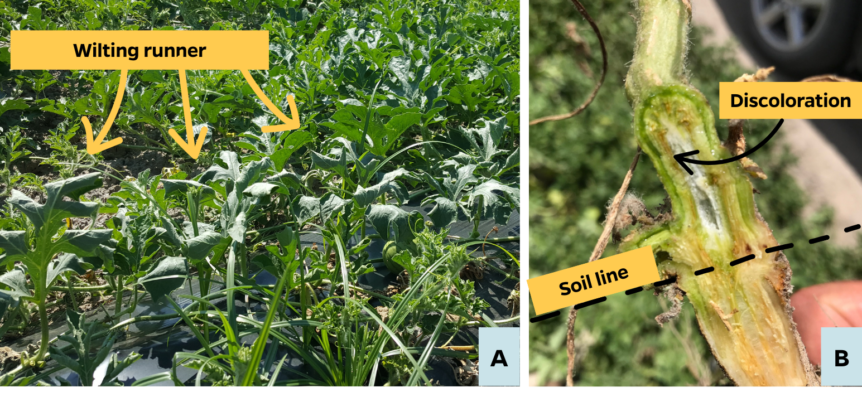
By Clint Thompson
Fusarium wilt was observed last week in North Florida watermelon fields. Weather conditions were ripe for development, says Bob Hochmuth, University of Florida Institute of Food and Agricultural Sciences (UF/IFAS) Regional Specialized Extension agent in Live Oak, Florida.
“Most of the fields are not far enough long to start showing it yet. However, in some of those early planted fields, we’ve got vines coming off the shoulder of the plastic, and those are the fields that are beginning to show some of that wilting and have been confirmed in some of those cases to be fusarium wilt,” Hochmuth said. “I think the thing that set the stage for us is, it was pretty cold early after planting, and that favors fusarium. Last week when it got warm, it put the plants under a little bit of stress in terms of picking up enough water. It was hot, and that’s the condition that begins to show the wilting.
“Fusarium clogs up the water-conducting vessels, and when it’s cold and overcast, a lot of times they get enough through that to not begin to wilt, but as soon as you start getting some of those mid-80 degree days, if they have clogging of the water-conducting vessels, that’s when we start to see the wilting.”
Plants infected with the fusarium wilt pathogen will eventually die if the infection is severe. The plant can produce fruit if the infection is weak, but when it begins using the energy necessary to produce fruit, the plant will likely decline and slowly die.
How to Know if it’s Fusarium Wilt
“There’s a lot of things that can cause wilting, but in the case of fusarium, it’s usually a few plants here and a few plants there where it’s sort of a spotty kind of a deal. Assuming the bed has adequate moisture, then that would be the first thing to check. If there’s adequate moisture and you still get wilting, then that would lead you to think a little bit more strongly about fusarium being an issue,” Hochmuth said.
Proline and Miravis can be used to protect watermelon transplants, but they need to be applied at transplanting and during the first two weeks of establishment.










